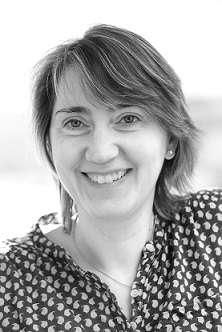Biomarkers from microvesicles

Alicia Llorente is the project leader for the project "Microvesicles as a Source of Prostate Cancer Biomarkers". Alicia works as a project group leader at the Department of Molecular Cell Biology, Institute for Cancer Research at Oslo University Hospital. Her general research interest is Biomedicine.In particular she studies the biology and clinical applications of exosomes, nanovesicles released by cells to the extracellular environment, in cancer.
What was the main aim of your project?
The primary objective of the project was to validate the use of specific exosomal proteins as non-invasive biomarkers for prostate cancer.
Why did you apply to the call for optimization projects from BIOTEK2021?
We found our preliminary results very exciting and wanted to validate them. We thought this call was perfect for that. It would have been difficult to get funding from more general calls such as FRIPRO.
What have you achieved so far?
We are very satisfied with the results of the project. The project has definitely moved closer to commercialization. We have demonstrated proof-of-principle for the diagnostic potential of several exosomal proteins in urine, as well as demonstrated feasibility of transferring the markers to an immune-based platform.
What was the biggest challenge and how did you handle it?
The main challenge was a delay in hiring a scientist to work on the project. This caused a delay in the spending of the budget. We solved the challenge by asking NFR to transfer the funding to the following year.
What have you learned during the project?
We have definitely learnt a lot during the project. We have more experience in handling patient samples and about collaboration with medical doctors. We have also seen that mass spectrometry is a method that is rapidly been developed, and that several actors are working to introduce this technique in clinical practice. The project has also increased Inven2's experience with pre-commercial development of diagnostic projects and requirements of industry players.
Is there anything you would have done differently?
There are always things that could have been done differently but, as I said above, I am satisfied with the results. Based on this project we have written a follow-up project using our previous experience from the optimaliserings-program.
Tell us about the collaboration with the TTO?
The collaboration with our partner Inven2 has worked very well. We have had several meeting to discuss the project, and they have followed the project very closely.
What have you gained personally from managing an optimization project?
This was my first experience with this type of project, and I have learnt a lot from managing the project. It was interesting to see the differences between this commercially-oriented project compared to other more research-oriented project that I have had. I liked the seminars organized by NFR where other projects were presented.
Do you have any advice to other researchers who are considering applying for optimisation funding?
Just do it! You will see your research from a different perspective. You will have the possibility to test your idea and built on it! But beaware that this type of programs may be more rigid than other programs such as FRIPRO.
What is coming up next?
The project has led to a successful application for follow-up proof-of-concept studies for definition of a prototype product and definition/verification of primary clinical utility.



















